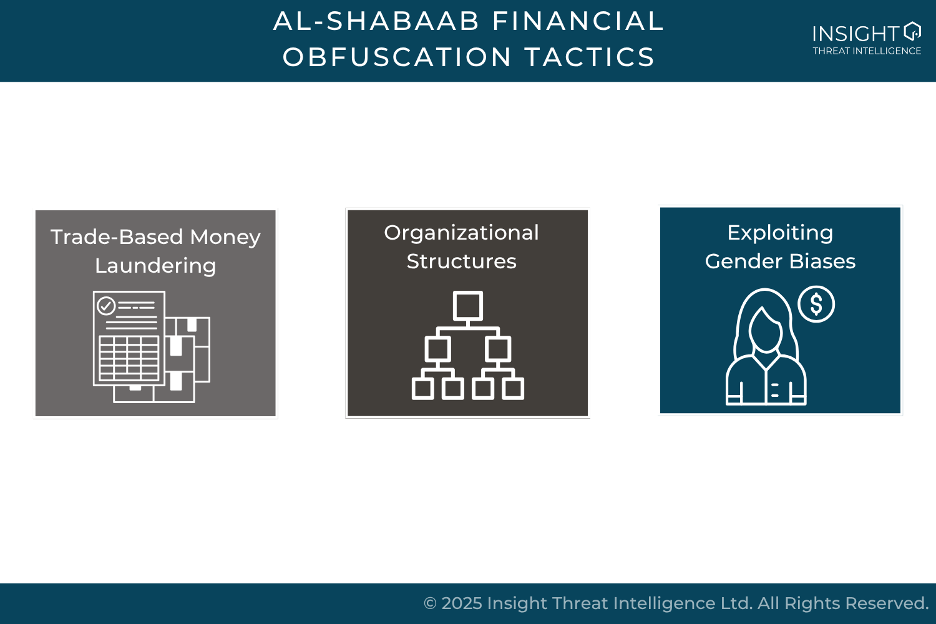Al-Shabaab has a comprehensive financial structure to support its activities across Somalia and beyond. The group brings in substantial revenue each year and directs those funds toward a variety of expenditures, including service provision, military operations, salaries, and recruitment. As outlined in earlier articles in this series, Al-Shabaab uses a mix of formal and informal mechanisms to move, store, and manage its money, often adapting to counter-terrorism measures.
This article examines the last piece of Al-Shabaab’s financial blueprint: the obfuscation tactics employed to conceal the origins, flow, and use of their funds. The group uses a variety of tactics, including trade-based money laundering and organizational structures involving charities, legitimate businesses, and front companies. They also exploit gender biases to further obscure their financial activities. These practices are key to understanding how Al-Shabaab protects its network from disruption and sustains its operations over time.
In this final installment of our series on Al-Shabaab, we highlight actors and key examples that demonstrate the diverse obfuscation tactics that the group uses.
Trade-Based Money Laundering
Charcoal Trade
Al-Shabaab has significantly relied on trade-based money laundering tactics, especially in involvement in Somalia’s charcoal trade, to finance operations and obscure the origins of its funds. Despite a United Nations Security Council ban on charcoal exports from Somalia imposed in 2012, the group continued to profit from the trade in subsequent years. Estimates from 2018 and 2019 suggest that Al-Shabaab earned between US$7.5 million and US$50 million annually. Although the trade appeared to slow between 2020 and 2021, US sanctions and investigations revealed that the illicit activity had resumed.
To bypass the UN ban, Al-Shabaab and its facilitators employ a variety of smuggling and financial obfuscation techniques. Shipments are often mislabeled to conceal their Somali origin, with forged documentation indicating that the charcoal originates from countries such as Iran, Comoros, Ghana, or Ivory Coast.1 A common smuggling route involves vessels arriving in Somalia carrying sugar and departing with charcoal, thereby creating a two-way illicit trade corridor. The financial proceeds from these exports are typically deposited in Gulf State banks and rerouted back to Al-Shabaab through import-export businesses and front companies.2








